Museums are a “community treasure.” That's how Linda Merkel, executive director of Allentown's America on Wheels, describes these volunteer-driven cultural nonprofits.
They function like our attics, storing our collective memory and memorabilia of people and events that have come before us. They give us a window into worlds and cultures different from our own; they teach us about art and science; they stimulate our imaginations, inspire our aspirations.
Museums provide “perspective and grounding and help us navigate the future,” says Jill Youngken, assistant director and chief curator of the Lehigh Valley Heritage Museum. “If you don't know where you were, you don't know where you're going.”
The Lehigh Valley's treasure trove of museums awaits your discovery. Herewith are nine, where your perspectives are sure to be challenged, enlightened and transformed.
National Museum of Industrial History
Telling the Tale of the Lehigh Valley's Industrial Muscle
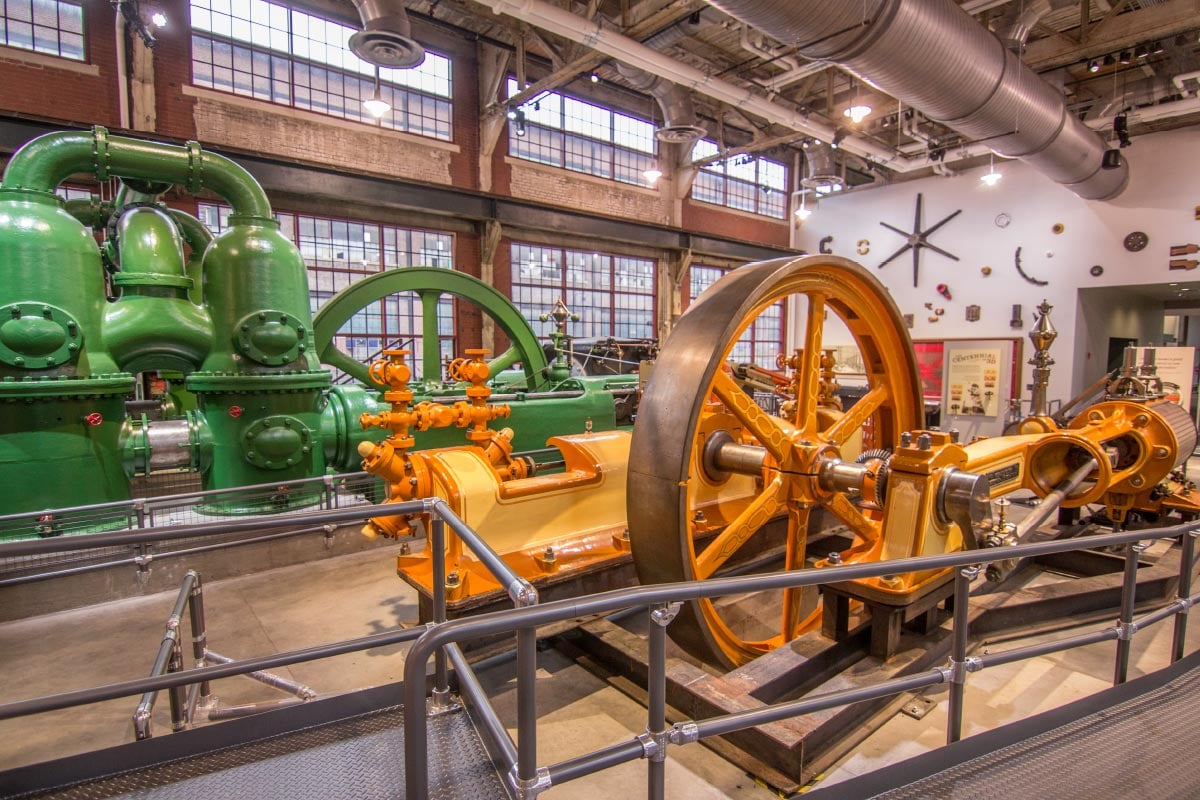
Between 1881 and 1989, there were more than 220 silk mills across the Lehigh Valley. In 1928, Allentown's 85 textile plants employed more than 8,000, and, from 1915 to 1925, more women were making silk than men making steel in the region.
At the National Museum of Industrial History, exhibits feature silk- and steel-making through collections of Bethlehem Steel production artifacts, 19th and 20th century textile machinery, worker stories and much more. The story of propane's development into an energy source is also on exhibit.
“Even if you don't think machines are your thing,” says Megan Pildis, director of development, “you'll be surprised that there's something here you can relate to. This is about people, machines and ideas—the story of American ingenuity.”
A Smithsonian affiliate, the museum finds its home in Bethlehem Steel's former Electric Repair Shop, in the shadow of 20-story blast furnaces.
This year's annual Steel Weekend—September 21 and 22—will feature a panel of women who worked in the steel industry: 25,000 women replaced men at Bethlehem Steel who entered military service during World War II.
The weekend will also include live entertainment, youth activities, guided Bethlehem Steel plant tours and an iron pour demonstration: scrap iron will be recycled and melted down at 2,700 degrees Fahrenheit in a fiery process of molten metal forming cast iron sculptures (September 21, 7 p.m.).
602 E. 2nd St., Bethlehem | Open Wednesday–Sunday
For information about admission costs and hours, visit nmih.org.
Historic Bethlehem Museums & Sites
Telling the Story of Moravian Settlers and More
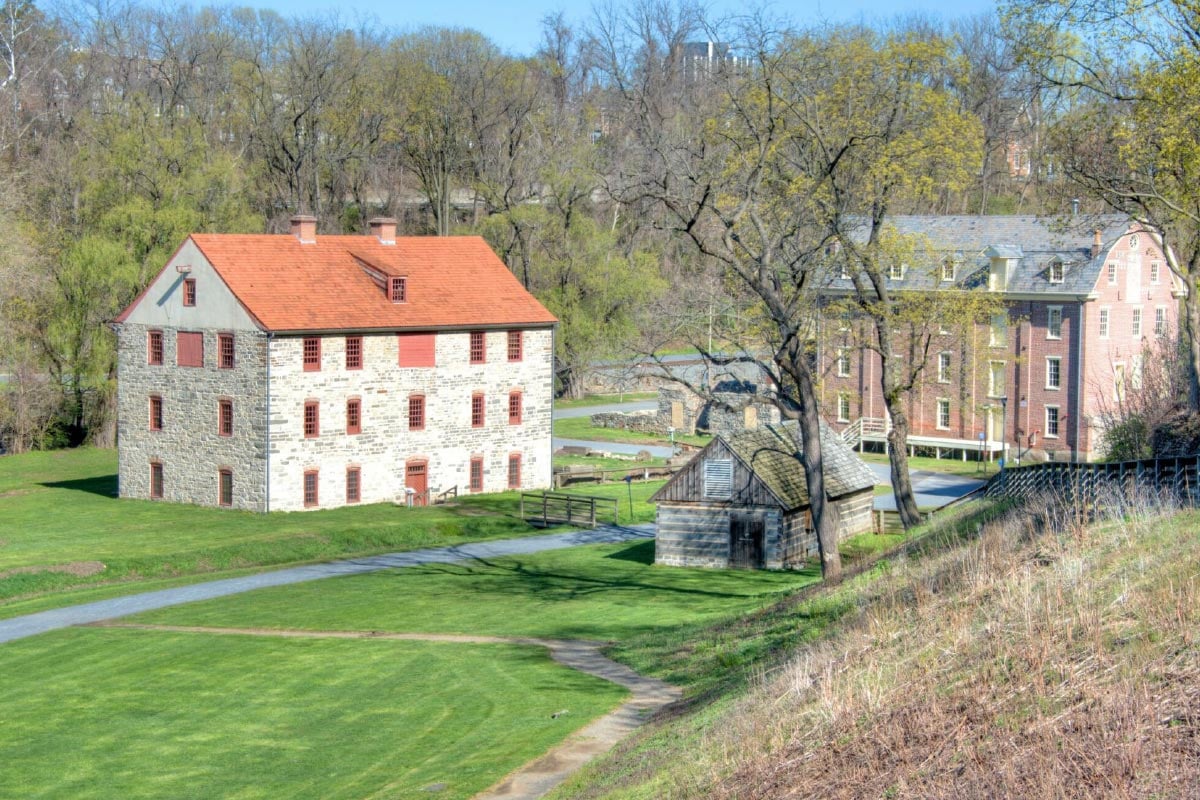
In the mid-1700s, you could hear 15 different languages spoken in Bethlehem, and Europeans, African Americans and Native Americans lived and worked together—reflecting the philosophy of universality of the Moravian settlers who founded a community here in 1741.
Historic Bethlehem Museums & Sites (HBMS) preserves and interprets the history of these settlers and earlier indigenous inhabitants, along with the history and heritage of people and events that have filled the three centuries since then. “We tell a holistic story of what makes Bethlehem special today,” says Lindsey Jancay, vice president and managing director.
HBMS cares for 20 sites across 20 acres in this National Historic Landmark district, including, for example: the Colonial Industrial Quarter, America's earliest industrial park; the 1741 Gemeinhaus, Bethlehem's oldest building; and the 1762 Waterworks—a Historic Civic Engineering Landmark and an American Water Landmark—which housed the mechanics that powered the first pumped municipal water system in America.
Experience Historic Bethlehem Museums & Sites, a Smithsonian affiliate, on a walking tour with a certified, costumed guide. Many sites are open only on the tours, which include a blacksmith demonstration, and start at the Goundie House Welcome Center.
Moravian Church Settlements-Bethlehem was inscribed to the prestigious World Heritage List in July, along with Moravian sites in Germany and Northern Ireland/UK, joining a Denmark site inscribed in 2015. These four historic settlements, a single World Heritage Site, bring Moravian town planning and architecture to the world stage. HBMS is a proud caretaker of eight buildings either part of the inscription or serving as supporting properties.
501 Main St., Bethlehem
Goundie House Welcome Center and Schropp Dry Goods Shoppe open daily. For admission costs, hours and tour information, visit historicbethlehem.org.
Sigal Museum
Connecting Local History to a Bigger Picture
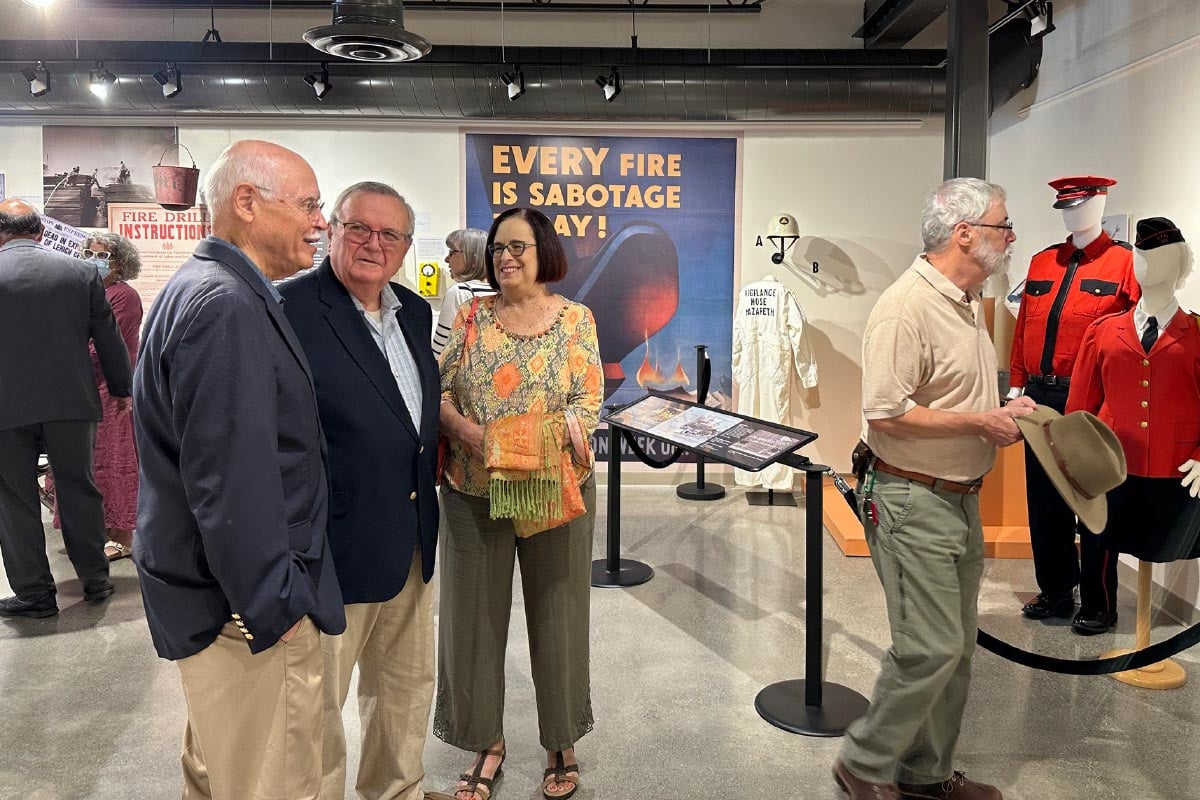
In the Sigal Museum's photograph of officers of the 1862 153rd Pennsylvania Volunteers Infantry, the 10 men in their Union Army uniforms look proud and ready. The regiment of close to 1,000, predominately from Northampton County and known as “Northampton's Own,” participated in Civil War battles at Chancellorsville, VA, and Gettysburg, leaving close to 300 men killed, missing or captured.
“This is American history made in Northampton County,” says executive director Megan van Ravenswaay. It's a perspective that helps visitors see their place in events of national scale.
Along with wartime artifacts, the Sigal Museum—Northampton County Historical and Genealogical Society's flagship institution—features collections of pre-European settlement artifacts, decorative arts, farming implements, colonial furniture, old-time children's toys and more.
The exhibit “Destination: Northampton County” shows a broader view of history by exploring the community today. Through stories, photographs and family heirlooms from the last 75 years, gathered from residents of different ethnicities and races, the exhibit celebrates inclusivity, diversity and community, and helps visitors realize that personal history is valuable, too.
Opening in September, “Warehouse Valley: A Changing Landscape” will compare historic landscape images of the Lehigh Valley to photographs of the same locations today. The exhibit—to include a series of adult and family programs—explores urban development and the geographic role of our region.
342 Northampton St., Easton | Open Thursday–Sunday
For admission costs and hours, visit sigalmuseum.org.
National Canal Museum
Boats and Mules That Changed America
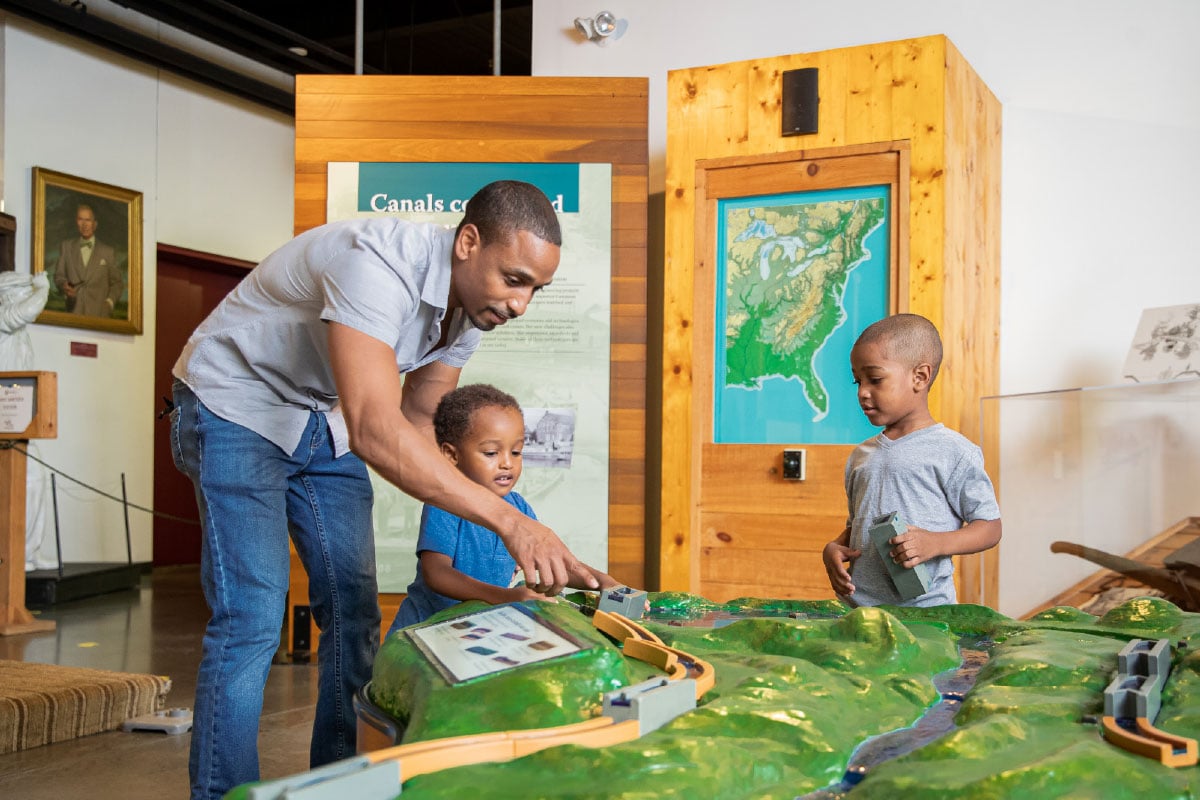
Back in the day, boats carried coal from northeastern Pennsylvania to Philadelphia on canals built along the Lehigh and Delaware rivers. Canal boats were powered by two-mule teams that pulled as much as 120 tons up to 35 miles daily, working 18-hour days, six days a week.
The National Canal Museum tells the story of this eastern Pennsylvania canal transportation system in the 1800s—and how it helped to birth America's Industrial Revolution. The story, says Gianna Caruso, communications coordinator, “shows the heart of the Lehigh Valley's industrial heritage. We bring that history to life.”
A signature program of Delaware & Lehigh National Heritage Corridor, the museum finds its home between the Lehigh Canal and Lehigh River in Hugh Moore Park, a City of Easton 520-acre park with more than two miles of restored canal and three locks. In summer and fall, cruises on the Josiah White II canal boat—one of only a few mule-drawn canal boats operating in America—are led by authentically costumed interpreters and pulled by mules Hank and George.
Exhibits and hands-on activities inside the museum invite visitors to build their own canal system, harness a mule, steer a canal boat, and more. Free guided history walks are offered twice monthly along the D&L Trail. (Check website for details.)
2750 Hugh Moore Park Rd., Easton
Open Wednesday–Sunday (days change in October) For admission costs and hours, visit canals.org.
Lehigh Valley Heritage Museum
Remembering the Way It Was
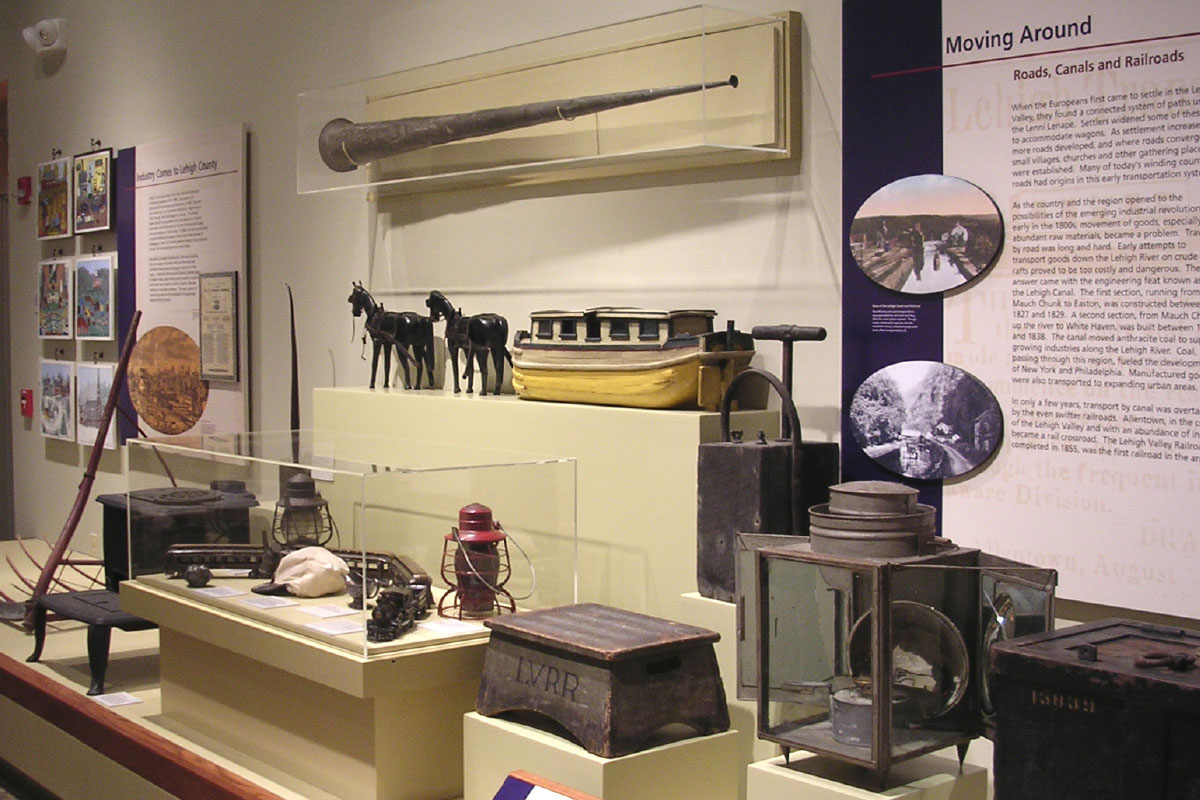
When you think of Lehigh Valley history, it would be hard to overlook the presence that Hess's used to command at Allentown's Ninth and Hamilton streets. No wonder seeing one of the department store's glittering crystal chandeliers displayed in the Lehigh Valley Heritage Museum elicits a wave of nostalgia.
The museum, headquarters of the Lehigh County Historical Society, is filled with Lehigh Valley memorabilia: for example, an 1848 issue of the weekly newspaper The Lehigh Register; Gen. Harry C. Trexler's two-sided Victorian “partner desk”; and the original 45 rpm record of Billy Joel's “Allentown.”
Exhibits tell the Lehigh Valley's story through the settlement of Pennsylvania Germans, the development of iron, cement and silk industries, the inspiring life stories of philanthropists Donald P. Miller and Gen. Harry C. Trexler and more. A fall special exhibit will focus on the story of Latinos and Hispanics in the county to share “the important and numerous contributions they've made and continue to make,” says Jill Youngken, assistant director and chief curator.
During the holiday season, the museum will present Pip the Mouse in “The Mouse Before Christmas,” a puppet show that premiered in Hess's front window in the 1960s and remained a hallmark of the store's Christmas celebration for several decades. (Check website for presentation details.)
432 W. Walnut St., Allentown | Open Tuesday–Saturday
For admission cost and hours, visit lehighcountyhistoricalsociety.org.
America on Wheels
Transportation Keeps the Lehigh Valley on the Move
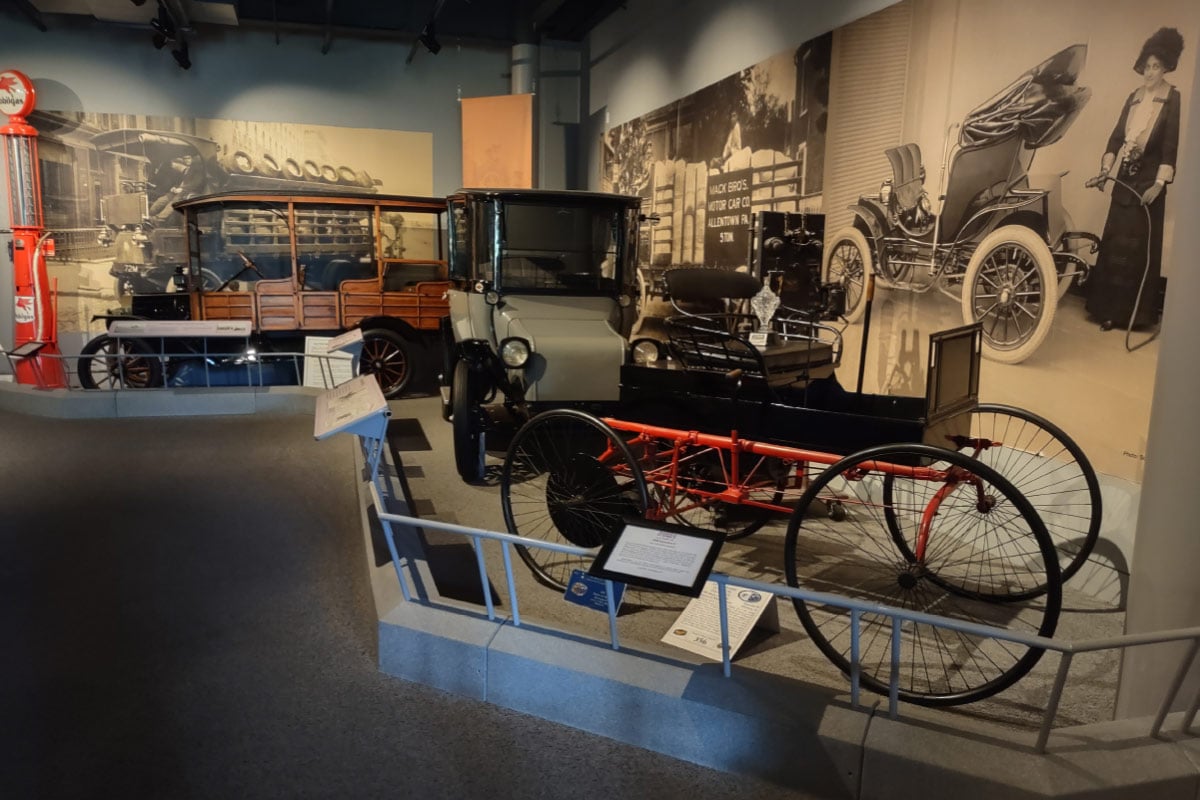
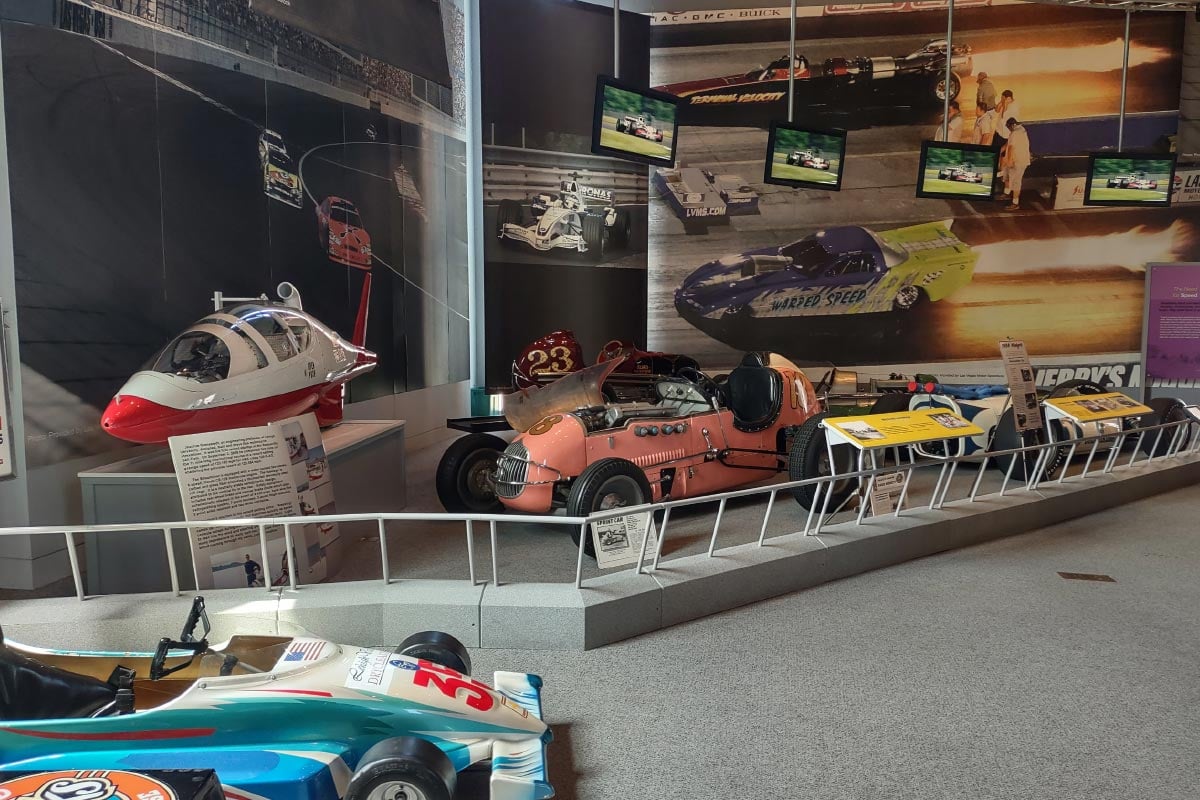
Believe it or not, electric vehicles outsold gas- and steam-powered models in the early years of the 20th century. Electric car makers, in fact, produced thousands of cars annually then.
Spend an afternoon at America on Wheels—a museum focused on U.S. over-the-road transportation—and you'll learn about turn-of-the-last-century electric cars and much more.
Seventy-five-plus cars, trucks, motorcycles and bikes are on exhibit—from the first horseless carriage built in 1889 in Allentown by Henry Nadig to a futuristic hydrogen fuel cell electric GM concept car.
Take in the race car driven by Mario Andretti when he was U.S.A.C. Indy champion in 1965 and 1966. “The Mustang at 60” exhibit features more than a dozen models of the iconic sports coupe, fathered by Allentown native Lee Iacocca—including a sleek white 1964 ½ model with a white convertible top, like the car first introduced at the 1964 New York World's Fair.
Children under 12 can “work on” a fabricated seven-foot classic car by changing tires or the oil, or checking air filters. Visit on select Sundays in September and October for rides in a unique classic car. (Check website for weather-dependent details.) And stop in after Thanksgiving to watch model trains (G Scale, O Scale and HO Scale) chugging around the museum's holiday display that includes a large “LEGO Train City.”
5 N. Front St., Allentown | Open Wednesday–Sunday
For admission costs and hours, visit americaonwheels.org.
Allentown Art Museum
Art From the Ages, For All Ages
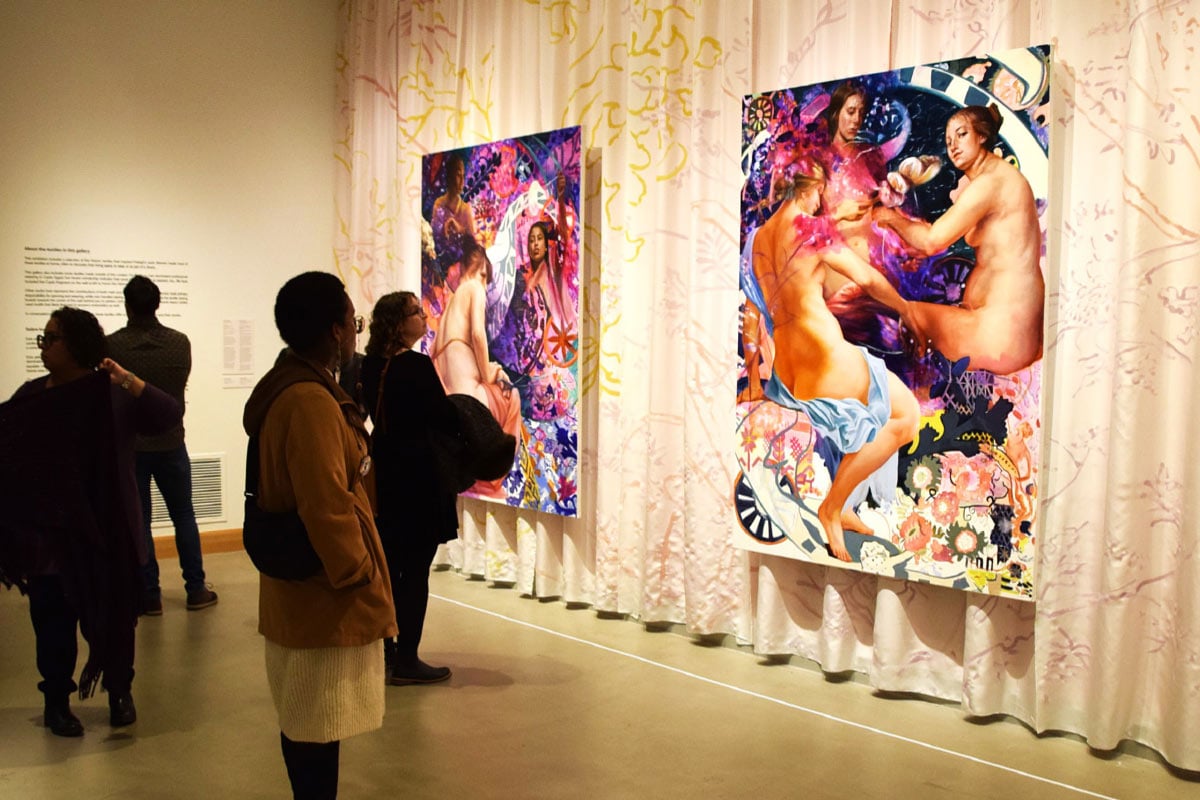
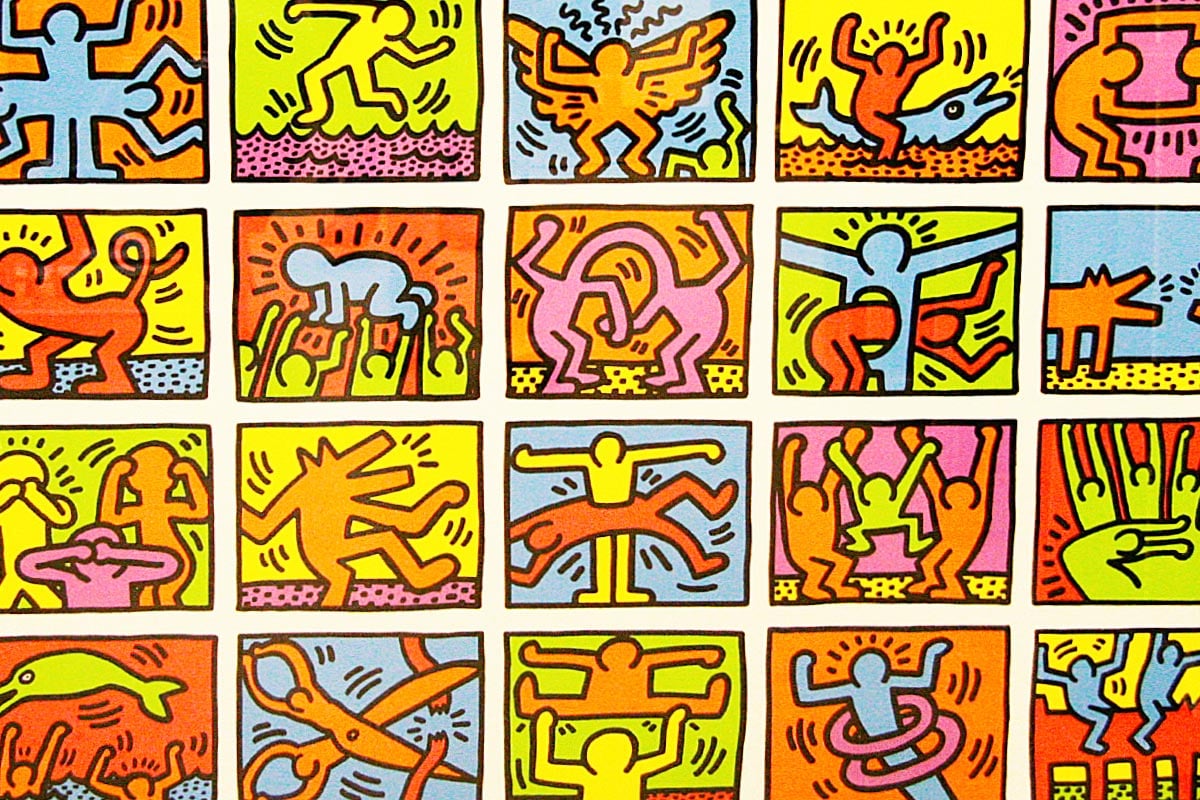
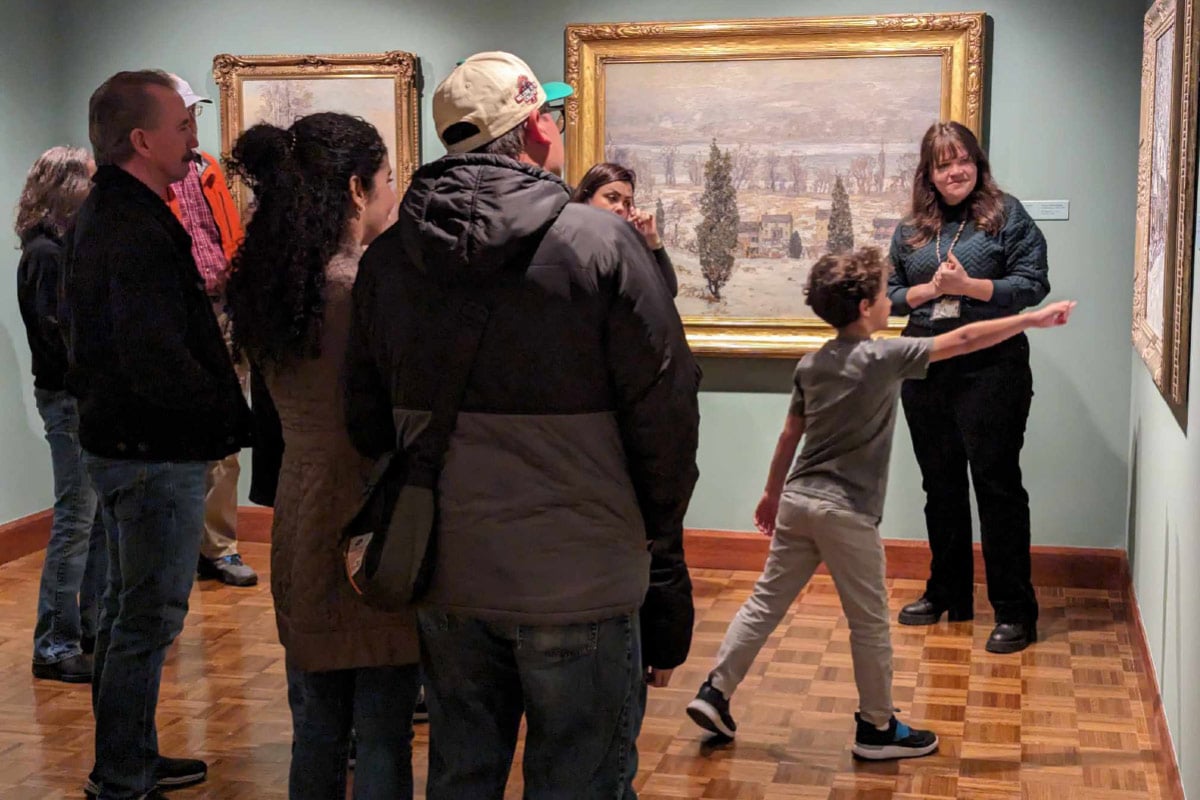
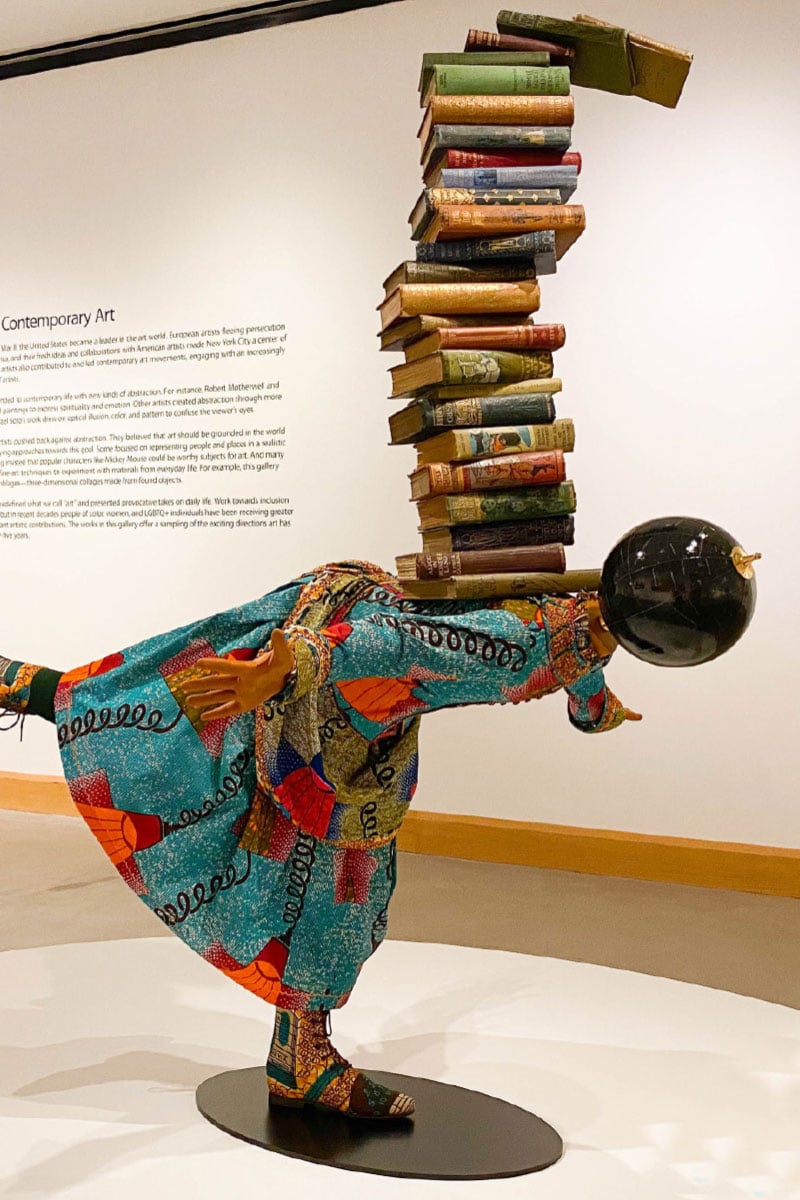
Take in the mastery of a Rembrandt portrait. Soak up the simplicity of an oak library designed by Frank Lloyd Wright. Delight your eyes with the vibrant color in a Keith Haring print.
One of the three percent of museums across the U.S. accredited by the American Alliance of Museums, the Allentown Art Museum's collections include: rare Renaissance and Baroque Italian, Dutch, Flemish and German paintings; American paintings from the mid-1700s; decorative arts from 18th century British silver to 20th century Tiffany Studios pieces; and textiles spanning 16 centuries and six continents.
The museum, founded in 1934, celebrates its 90th birthday this year with an eye on the future. Two Tiffany church windows will be added to its Kress Gallery in 2025, after the gallery's renovation, scheduled to start in October.
Weekend programs for children offer hands-on workshops creating artwork inspired by the museum's collections; and monthly Art Can gatherings provide accessible art experiences for adults with Alzheimer's and dementia.
Thanks to grants and contributions, the museum stopped charging admission fees in 2022. Since then, says Chris Potash, manager of marketing and public relations, “We have become more of a resource. We're like a public library, and this is a huge plus for any community. This is a place to see historically significant art… a place that expands the world for anyone who visits.”
31 N. 5th St., Allentown | Open Thursday–Sunday
Free admission; for information about hours and special exhibits, visit allentownartmuseum.org.
Happy Anniversary, SOTA: 60 years and going strong!
Since its founding in 1964, the 200-member Society of the Arts (SOTA) has raised more than $1.5 million to support the Allentown Art Museum.
Thanks to this support, the museum expanded its print collection with nearly 400 works dating from the Renaissance to the 21st century—including a rare Rembrandt etching. SOTA's fundraising also supports educational programs, the museum's free admission initiative and more.
Members also donate time and talent. Last year, volunteers shared more than 6,000 hours leading docent tours, working with children and families in Art Ways' creative learning programs and staffing special events. They dust artwork weekly, too.
“SOTA has been instrumental in helping the museum enrich and elevate the cultural landscape of the Lehigh Valley,” says Max Weintraub, museum president and CEO. “It is an extraordinary legacy, and a wonderful testament to the commitment and dedication to service of every SOTA member, past and present.”
Da Vinci Science Center at PPL Pavilion
Innovative, Interactive, Immersive—Dive Deep into Science and Technology Here
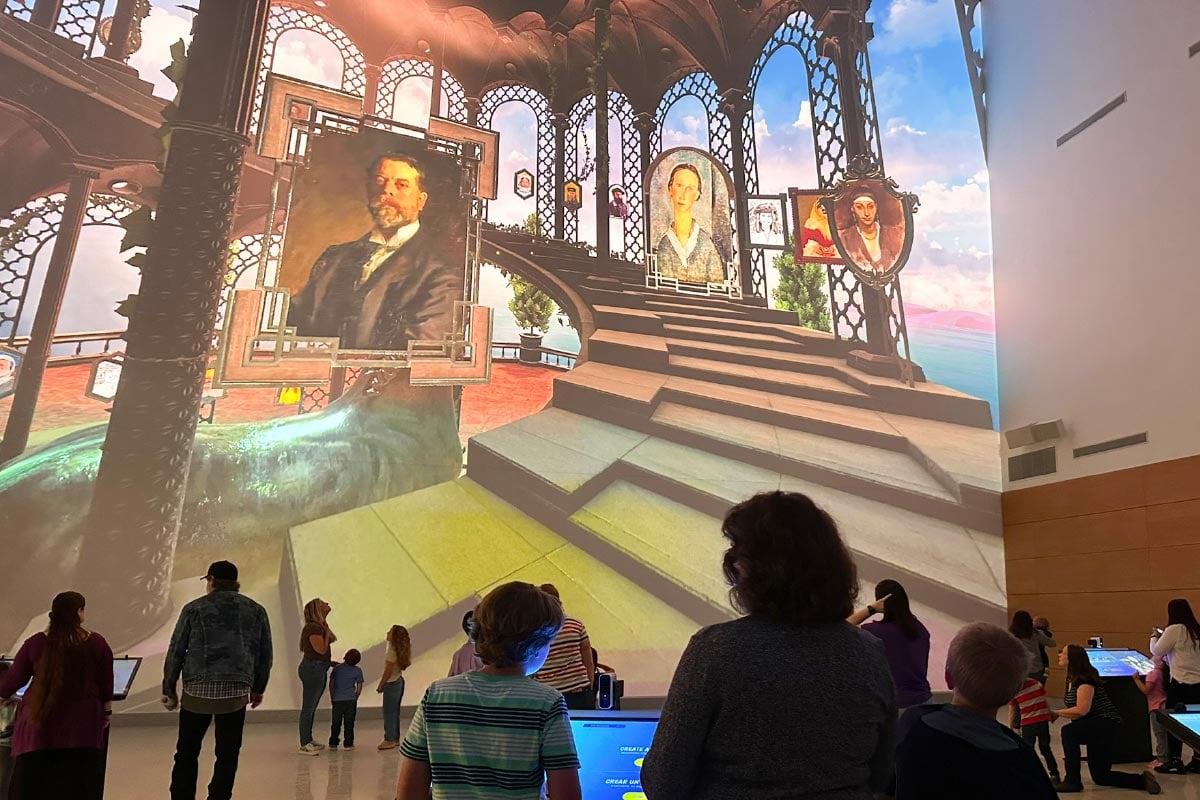
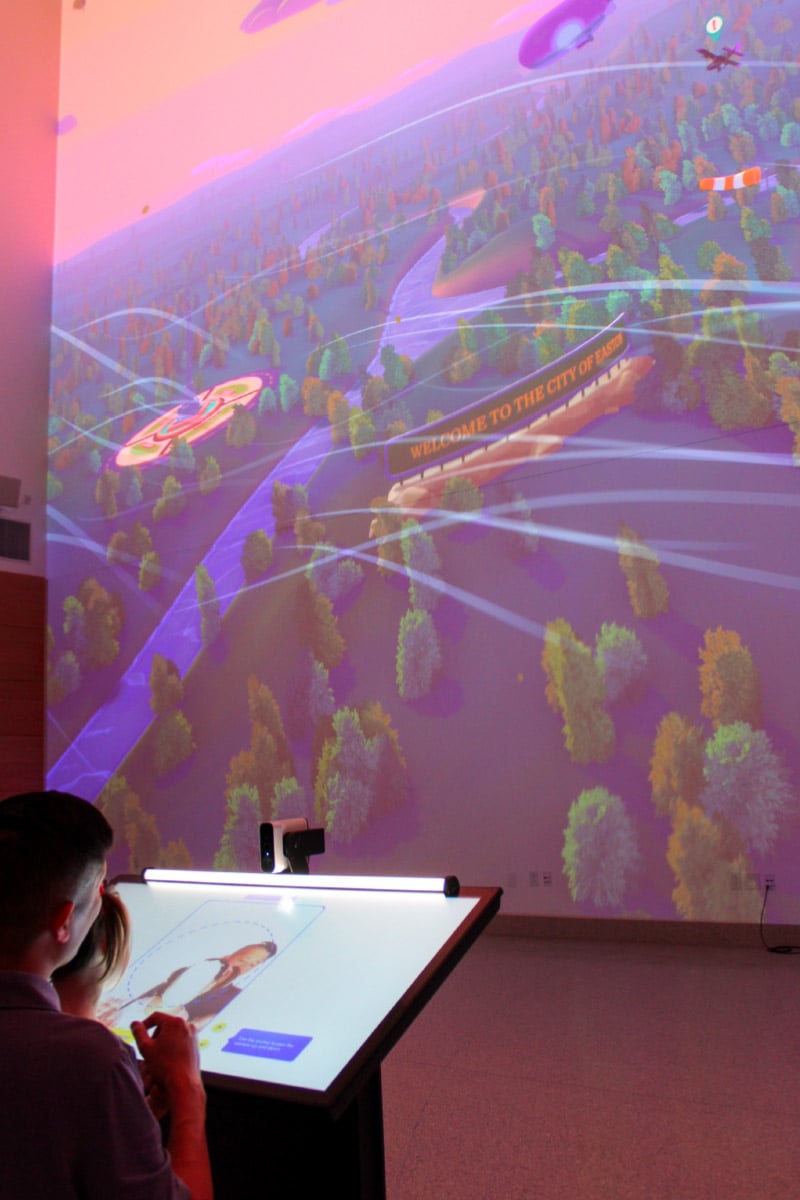
If the four-story screen in Curiosity Hall at the Da Vinci Science Center doesn't captivate you, creating your own flying machine avatar to soar digitally across the Lehigh Valley landscape pictured there surely will.
The cutting-edge technology that powers this immersive experience is just one example of exhibition innovation in the center's new facility, which opened at PPL Pavilion in May.
A regional hub for STEAM (Science, Technology, Engineering, Art, Mathematics) education, the Da Vinci Science Center offers “a great day out with your family that's fun and very educational,” says Lin Erickson, executive director and CEO. Exhibits focus on health, the environment and how science and engineering factor into Lehigh Valley manufacturing.
Children crawl through a larger-than-life intestine and perform virtual endoscopies. Adults investigate a next-generation, electric, clean-running Mack truck paving the way to a greener future and interact with a solar energy neighborhood that shows how light can power a home. Both generations learn how conservation will help protect our Lehigh River Watershed.
The Da Vinci Science Center encourages exploring the world by observing, questioning and analyzing details to inspire critical thinking and problem-solving. Says Caroline Scutt, director of communications and community relations, “It reframes what it means to be a scientist, and who is a scientist.”
Sharks, a special exhibit, opens October 12—its third stop after debuting at New York City's American Museum of Natural History.
815 W. Hamilton St., Allentown | Open daily
For admission costs and hours, visit davincisciencecenter.org.
Museum of Indian Culture
Pennsylvania's Oldest Museum Focused Exclusively on Telling the Native American Story
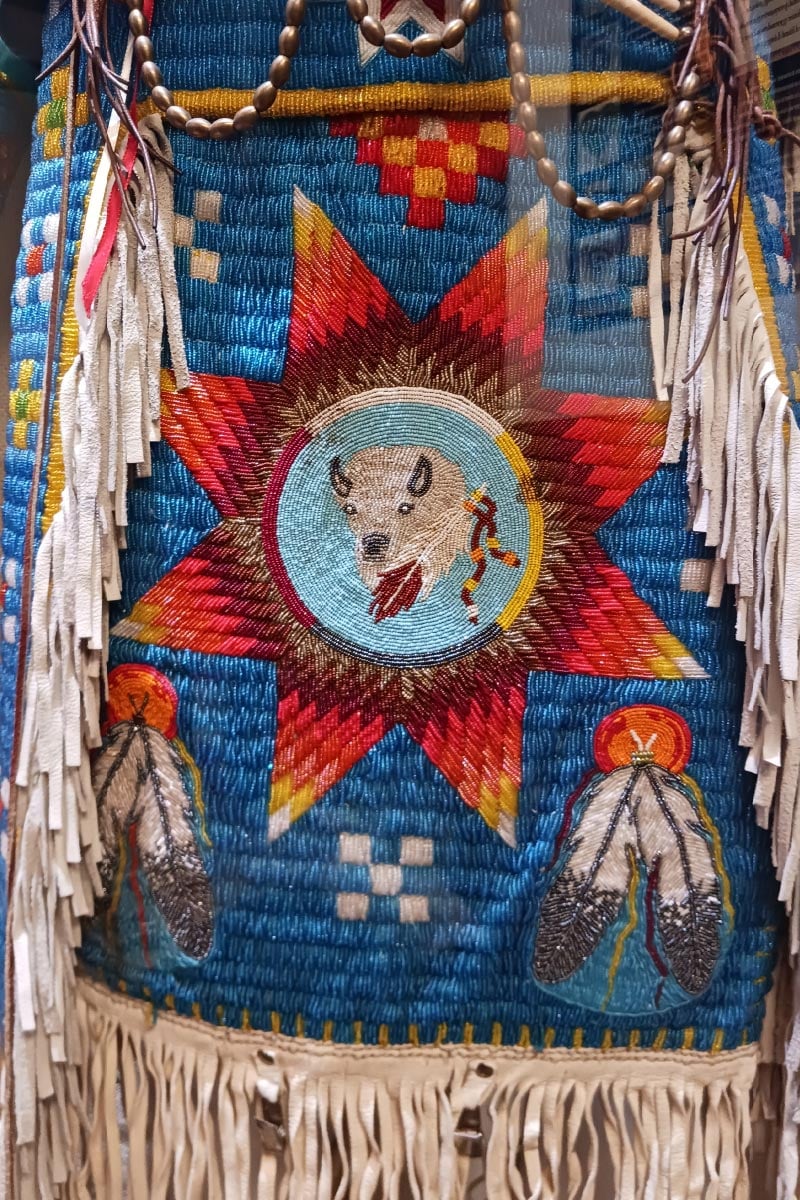

Long before Allentown was founded in 1762 and the Moravians put down roots in 1741, the Lenape (lehn-AH-pay) people inhabited this land we've come to call the Lehigh Valley.
The Museum of Indian Culture tells the story of these indigenous peoples—whose ancestral lands, called Lënapehòking, covered Pennsylvania, New Jersey, Delaware and parts of New York—and the stories of other Native American peoples throughout the Western Hemisphere.
Collections of stone tools, ceramics, carving, weapons, beadwork and basketry show how Native Americans navigated life before European contact. A current special exhibit shows the influence of European glass beads and how they transformed the ways Native Americans adorned themselves and their ceremonial regalia.
Founded in 1980, the museum's more than 40 years of educational programming has included August's annual Roasting Ears of Corn Festival and the upcoming Heritage Day for children, September 28, featuring arts and crafts, and lifeway skills.
The museum plans to break ground in October on a Native American village expected to open by fall 2025 at its location on Little Lehigh Parkway, an old Lenape trail. The current trail will be expanded to start at Bogert's Bridge and end across Fish Hatchery Road at a spot where a known village existed 14,000 years ago.
“There's a lot of history here,” says Pat Rivera, executive director; the village “will bring that history to life.”
2825 Fish Hatchery Rd., Allentown | Open Friday–Sunday
For admission costs and hours, visit museumofindianculture.org.
Published as “From Silk to Steel, Cars to Canals" in the September 2024 edition of Lehigh Valley Style magazine.














